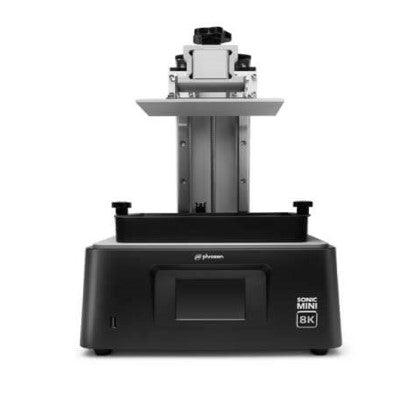Why is There Only a Thin Layer on My Building Plate?
What’s Wrong with the 3D Print?
When printing, you notice that the bottom layers have been printed successfully and have formed a smooth flat pancake on the building plate, while the rest of your 3D print has failed and is now stuck onto the FEP or PFA (nFEP) film. This issue is similar to the layer splitting or the transition layer issue.

What Caused the 3D Printing Issue?
Similar to the layer splitting issue, this phenomenon occurs when certain parts of the bottom layers fail to stick to the previous layer, but instead of splitting, the whole layer falls into the resin vat and gets stuck onto the FEP or PFA (nFEP) film. Here’s why this could happen:
- The normal layers are underexposed.
- There is a large difference between exposure time for the normal layers and exposure time for the bottom layer.
Before Continuing On
Before we begin, please remove the cured resin stuck on the vat. If you encounter issues while removing cured resin from the FEP or PFA (nFEP) film, please refer to this article.
Troubleshooting the Pancake On the Building Plate
If you’re printing with the Sonic Mini 4K, Sonic 4K, or Sonic Mighty 4K, you can resolve the issue by using the following method:
- Use a resin exposure finder to dial in the settings. Make sure you have the correct exposure time.
- Set transition layer count at 6 - 10.
If you’re using Sonic Mini, Sonic, Sonic XL 4K, Shuffle series, or Transform series, the transition layer function isn’t available, so you may have to adjust a few more settings:
- Use a resin exposure finder to dial in the settings. Make sure you have the correct exposure time.
- Lower the up speed or lifting speed by 20%.
- Increase the normal layer exposure time by 20%.
- Increase the light-off delay time by 1000ms or 1s.
Light-off delay time is essential in resin 3D printing. With the correct settings, each layer will be printed in a much more stable manner, resulting in a better quality 3D print. Please refer to this article to learn more about light-off delay.

